Internal standards are used to help correct for instrument sensitivity drift. Internal standard solutions can be mixed into the samples, or they can be pumped in from a separate bottle during the run. Or you may decide not use an internal standard at all.
When pumping a internal standard from a separate bottle, you have to attach its peristaltic pump tube to the sample mixing T. If you don’t pump from a separate bottle, you want to plug that branch of the mixing T to speed-up washout between samples.
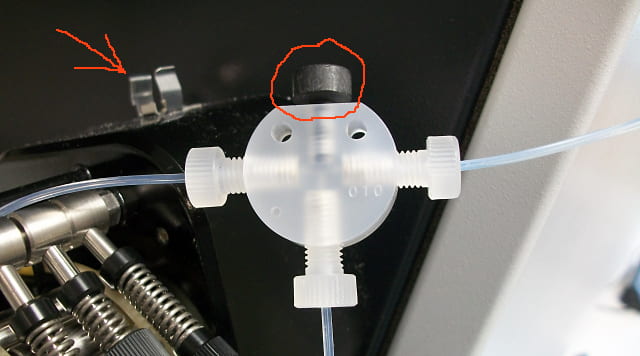
This is the mixing T. The sample comes from the peristaltic pump from the left, and goes to the torch to the right. The internal standard is pumped through the tube on the bottom. If you aren’t using a pumped internal standard, that tube should be replaced with a plug.
Circled is an electrically conducting ground, used to remove electric charge from the sample stream. It should be attached to the grounding clip, indicated by the arrow.
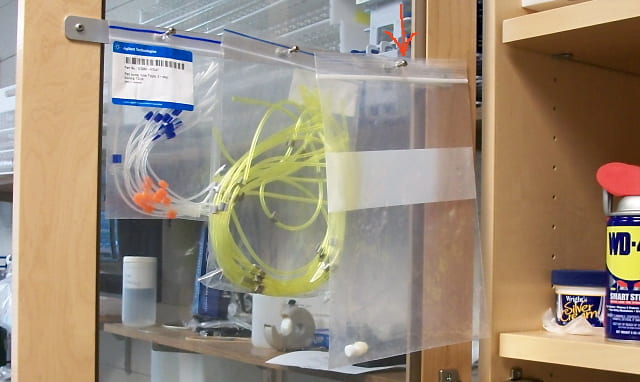
For changing the mixing T you need parts stored in this bag.

These are the parts. For no pumped internal standard, use the plug on the left. When pumping an internal standard, use the tubing on the right. The peristaltic pump tubing has orange-blue plastic tags.
The acorn nut, on the plug, is used to cover the threaded ends to reduce thread contamination.
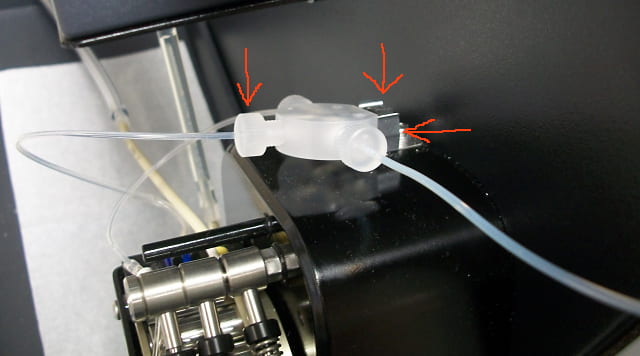
This shows the mixing T set up for pumping the internal standard. The ground is attached to the grounding clip, and the internal standard pump tube goes off the the left, down to the middle peristaltic pump position.
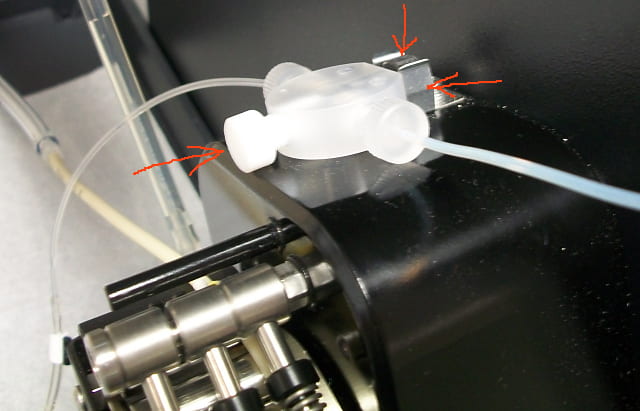
This shows the mixing T set up for no pumped internal standard. The ground is attached to the grounding clip, and the left branch of the mixing T has the plug
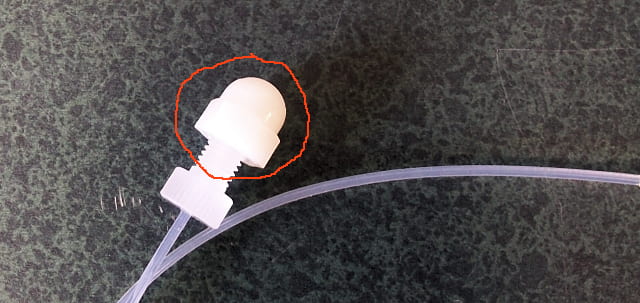
Whichever part is not in use, put the plastic acorn nut over the end of the threaded piece to keep it from getting contaminated.

The parts not being used should be put back in the plastic bag and hung up in the cabinet.
